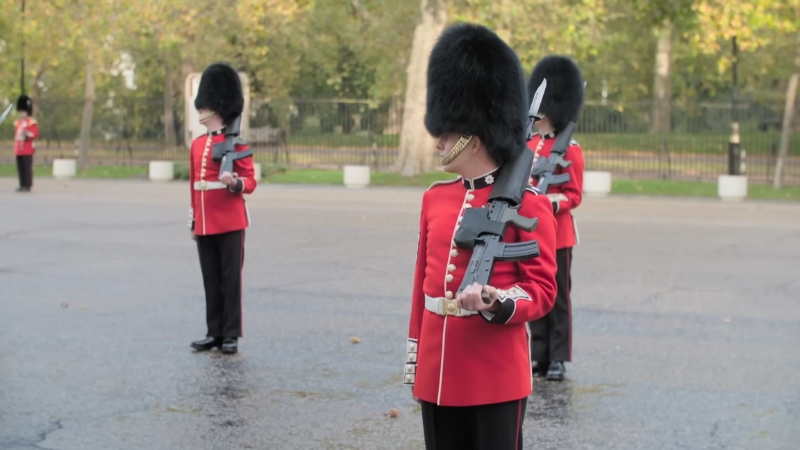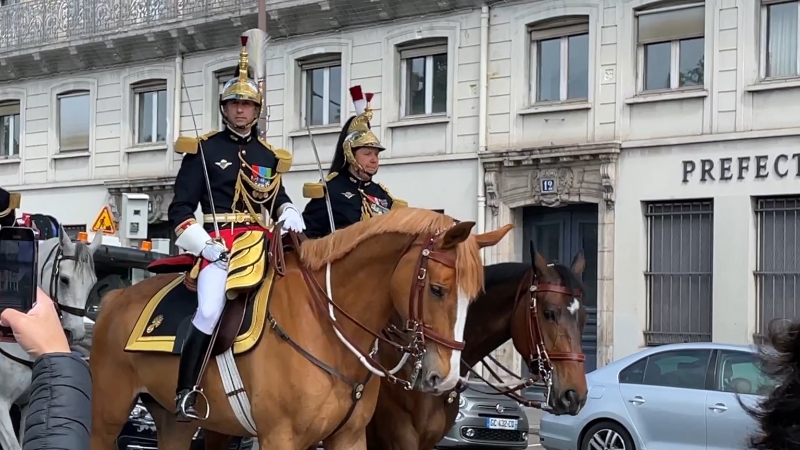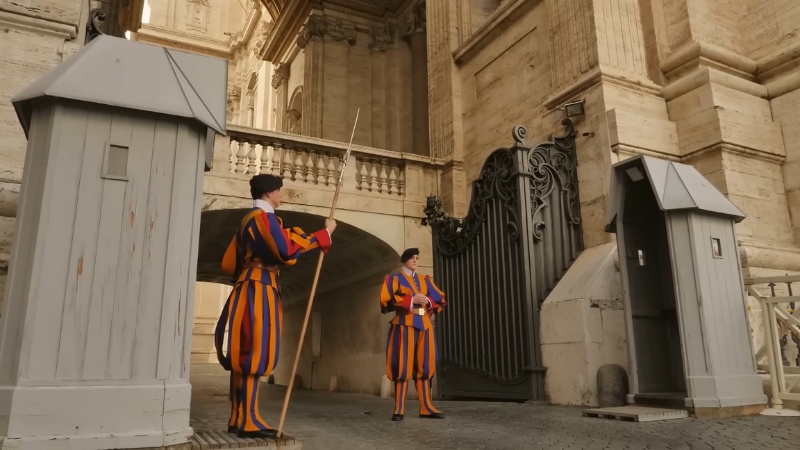If you’ve ever seen the Swiss Guard standing sentinel at the Vatican — those unmistakable uniforms that look like something out of a Renaissance painting — you might’ve wondered, “Wait, they’re still around?” Yep.
And they’re not ceremonial props, either. They’re legit bodyguards, well-trained and dead serious about their job: protecting the Pope.
But they’re not the only royal protectors with centuries of history behind them. Across Europe (and beyond), other monarchies have their own elite guards, each with a unique blend of tradition, ceremony, and actual security muscle.
Think Buckingham Palace’s stoic sentries, or the dramatic flair of Morocco’s Royal Guard on horseback.
Let’s pull back the curtain on how the Swiss Guard stacks up against other royal bodyguards around the world — in terms of history, function, uniforms, and, yep, actual combat training.
A Quick Snapshot: Who’s Who in Royal Protection
Before getting into the grit, here’s a brief rundown of a few major players in the royal bodyguard scene:
Guard Unit
Country
Established
Primary Role Today
Swiss Guard
Vatican City
1506
Protecting the Pope
British Household Division
United Kingdom
1660 (modern form)
Ceremonial & security
Royal Guard of Spain
Spain
1504 (roots), modernized in 19th c.
Military protection of the royal family
Royal Guard of Morocco
Morocco
Early 20th c.
Elite security for the monarchy
Republican Guard (France)
France
1802
State ceremonial duties, VIP protection
Yeah, some of these sound like they were pulled straight out of a medieval fantasy — but most are modern outfits with real tactical chops.
The Swiss Guard: More Than Just Flashy Uniforms
First, let’s clear something up: the Swiss Guard isn’t just Vatican cosplay. Recruits are actual Swiss citizens, all Catholic, all male, all with Swiss military training.
It’s not some tourist gimmick — these guys carry Glocks under those breeches and can switch from parade stance to active defense in seconds.
Requirements to Join
To become a Swiss Guard, you have to be:
And yes, they have to actually like the Pope. Loyalty isn’t just a formality.
What They Actually Do
Despite the frilly look, their day job is serious:
And yes, the uniform does look like something Michelangelo dreamed up — but fun fact: it was designed in the early 1900s by Commandant Jules Repond, inspired by Renaissance art.
The British Household Division: Precision, Pageantry… and Firearms

Flip over to the UK and you’ve got the Household Division — those red-coated, bearskin-hat-wearing guards outside Buckingham Palace.
Now, while they often appear stiff as statues, the reality is? They’re fully operational soldiers who rotate in and out of active duty, including deployments abroad.
Ceremonial vs. Combat
There’s a reason the Queen’s (now King’s) Guard can look so stoic during changing of the guard — they’re trained to not break rank, even if tourists do their worst. But they’re also:
It’s not uncommon for the same guards who stand outside royal palaces to serve in combat zones like Afghanistan.
The Royal Guard of Spain: Tradition with a Tactical Twist
View this post on Instagram
Spain’s Guardia Real is less visible on the world stage but plays a crucial role in the security of the Spanish monarchy. Formed from various older units going back to Ferdinand and Isabella, it’s one of the oldest protective services in Europe.
Who’s in the Guard?
So yeah, they’ve got the “ceremonial box-checking” covered, but their structure is more military-focused than the Brits or Swiss. They also run joint exercises with NATO forces — definitely more boots-on-the-ground in modern defense than you might expect.
Morocco’s Royal Guard: Power and Pageantry
@1stmorocco Since 1088 🇲🇦 #morocco ♬ Ya man malakni يا من ملكني imanehzb – ⚜️ queenofza3za3 ⚜️
In Morocco, the Royal Guard is more than a pretty face. It has roots in the Black Guard (or ‘Abid al-Bukhari’) dating back to the 17th century, originally composed of enslaved soldiers from sub-Saharan Africa who became fiercely loyal to the Sultan.
It’s a complex and often uncomfortable history, but the modern force is very different.
Modern Role
Today, the Royal Guard is:
Unlike Europe’s ceremonial-heavy outfits, Morocco’s guard doesn’t participate in foreign deployments. They focus almost exclusively on domestic protection and royal appearances.
France’s Republican Guard: Yes, They Still Have One

Even without a monarchy, France retains a “royal-style” protective service. The Republican Guard protects the President, performs ceremonial duties, and secures state buildings like the Élysée Palace and the Senate.
Real-World Duties
They also act as a national reserve police force, and in certain situations, can support counter-terrorism operations.
Their horseback cavalry and full regalia at state ceremonies keep tradition alive — but make no mistake, they’re legit in a crisis.
How They Stack Up: A Side-by-Side Breakdown
So what separates these units? Here’s a clearer comparison:
Category
Swiss Guard
British Household Division
Spanish Royal Guard
Moroccan Royal Guard
French Republican Guard
Protective Role
Pope
Monarch & royals
King & royal family
King
President
Combat Training
Swiss Army
British Army
Spanish Armed Forces
Internal military training
Gendarmerie Nationale
Public Duties
High visibility
Ceremonial + deployments
Less public-facing
Mostly royal events
State ceremonies
Uniform Vibe
Renaissance/Rococo
Classic red & black
Blue dress + beret
White tunics, red sashes
Napoleonic
Firepower
Sidearms & rifles
Military-grade rifles
Full military arsenal
Unknown (restricted info)
Standard police/military gear
Security vs. Symbolism: Where’s the Line?
Let’s not kid ourselves: a big part of any royal guard’s job is optics. Ceremony matters. Uniforms matter. There’s political and cultural messaging embedded in every parade and salute.
But there’s also the gritty reality of high-threat environments. The 1981 assassination attempt on Pope John Paul II shifted the Swiss Guard’s internal protocols, pushing them toward a more modern, responsive defense posture.
Likewise, after events like the 2017 Westminster attack, UK royal guards have upgraded alert systems and collaborated more closely with domestic counter-terror units.
No matter how archaic their outfits may seem, these guards aren’t locked in the past. They evolve — quietly, steadily, but seriously.
So… Who’s the “Best”?

That’s a loaded question. Depends on what you mean by “best.” Most combat-ready? Maybe the British, since their guards are active-duty soldiers.
Most loyal? The Swiss Guard takes vows directly to the Pope and swears to protect him with their lives. Most elite in terms of secrecy and royal proximity? Morocco’s guard plays that card.
But here’s the thing — every single one of these units plays a role bigger than just protection. They’re symbols. Living links to national identity, monarchy, faith, and history.
They’re also working professionals, balancing the weight of tradition with real-world threats. Which, if you think about it, might just be the most difficult job of all.
Final Thoughts
Royal guards tend to move quietly in the background. They’re not the headline-makers. They don’t go on TV or post on Instagram (well, usually). But they’re always there — a step behind, a few paces away, eyes always scanning the crowd.
And maybe that’s the real takeaway. Behind all the splendor and ceremony lies an ancient idea that still resonates today: someone watching, someone protecting, someone sworn to stand between power and danger—even if it means taking the hit themselves.
So the next time you see a guard in a brightly colored uniform or an impossibly tall hat, just remember: history runs deep. And beneath that crisp, polished surface? There’s steel.

